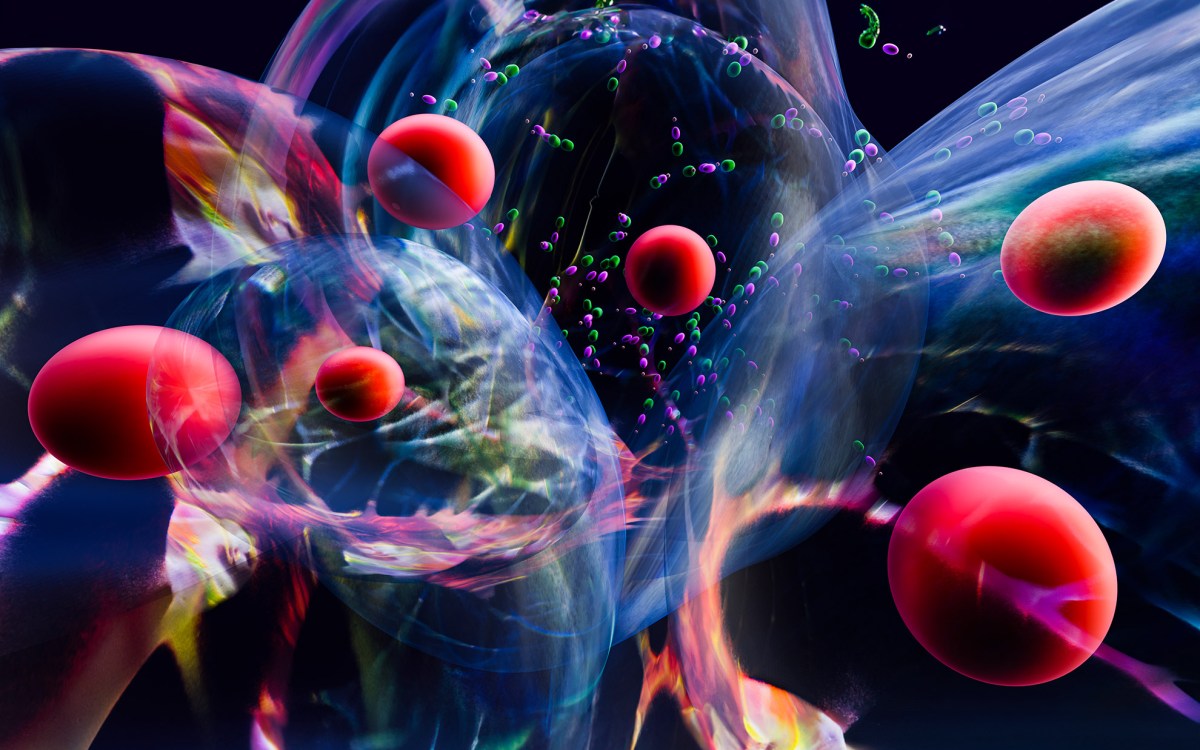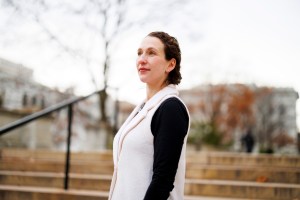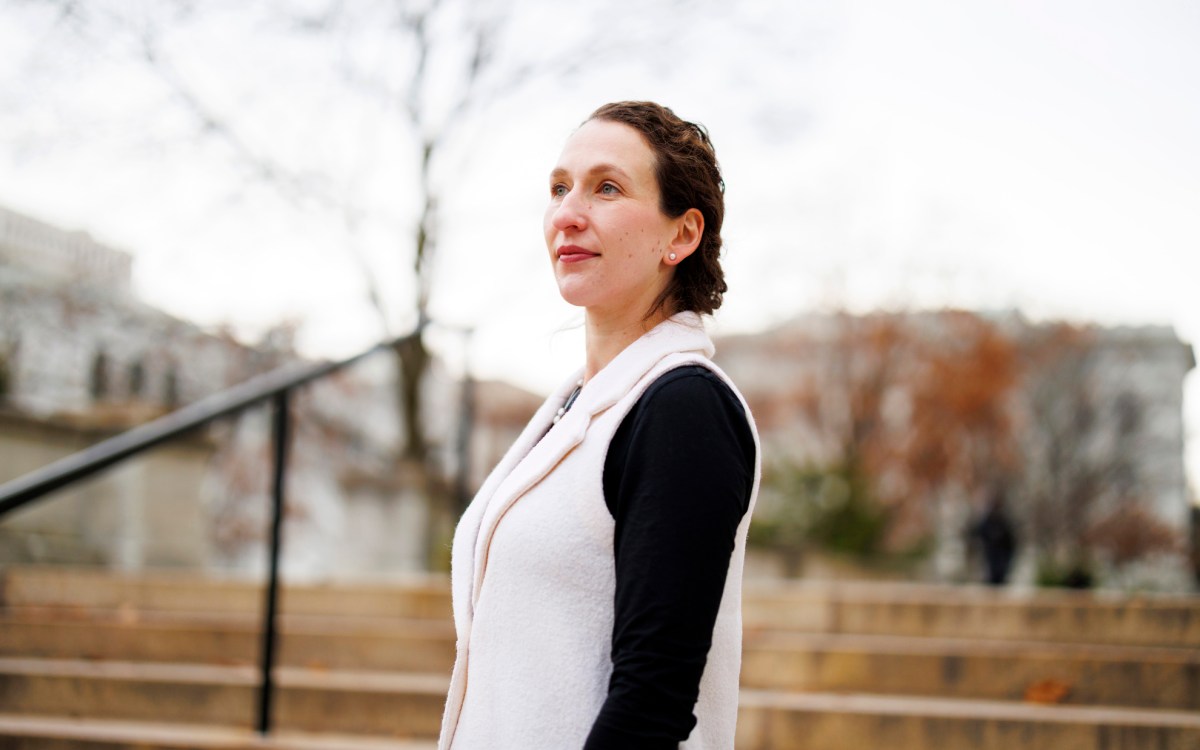Aging Brains Lose Less Than Thought
It’s considered a dreaded inevitability of growing old—you lose thousands of brain cells every day. This idea has been a centerpiece of scientific dogma and popular lore for 40 years.
When new technology became available to actually count cells in different parts of the brain, neurologists at the Medical School and the Massachusetts General Hospital used it to determine just how bad the loss might be. They came up with a pleasant, dogma-busting surprise.
“We examined the brains of 38 normal people who died between ages 57 and 90 years, and found no age-related loss of neurons [brain cells],” announced Bradley Hyman, associate professor of neurology. “Such evidence of structural preservation leads us to an optimistic perspective. It would be a tough job to reconstitute a brain that loses a million neurons every year or two, whereas restoring function when cell numbers remain uncompromised is plausible.”
Such a possibility was unthinkable even a few months ago. As long as brain cells haven’t been lost, drugs might be developed to restore their performance — brain tonics that relight mental fires. Cells charged with learning, memory, and problem solving might be stimulated to make up for lost function.
Working in collaboration with colleagues at Washington University and the Mayo Clinic, Hyman and postdoctoral fellow Teresa Gomez-Isla counted cells in two brain areas of people they had good reason to believe were normal when they died. One area, the entorhinal cortex in the center of the head, is vital for memory. Another part, near the top of the brain, integrates input from the senses with cognition and problem solving. They found that people 90 to 98 years old had as many brain cells in these regions as those 57 to 60 years old.
There’s a big caveat involved in doing things this way. Researchers can’t count the brain cells of an individual until after death, leaving unanswered the question of how many cells each person had during life.
“It’s a tricky comparison,” Hyman admits. “But there are statistical tests you can do to see if this is a big problem. We don’t believe it is.”
Beginning of the End
Among the brains Hyman and his colleagues examined, they found people with mild Alzheimer’s disease. Characterized by memory loss, this infirmity specifically affects the entorhinal cortex. Some of the oldsters showed a 50 percent loss of cells in that part of the brain. These people never complained of problems before they died, but doctors who tested them regularly detected signs of problems with short-term memory.
“Such subtle impairments may be the first signs of Alzheimer’s disease,” Hyman notes. “Our results call into question the belief that poor memory is a normal part of growing old. And they may provide an advanced warning of the onset of Alzheimer’s.”
At present, the illness is diagnosed by elimination. If doctors can’t determine the cause of a patient’s dementia, they call it Alzheimer’s. By then, irreversible damage can occur. If selected parts of the brain show cell losses before memory or other functions degrade noticeably, perhaps this finding can be applied to reducing the toll of the disease.
“The good news is that people who lose 50 percent of their entorhinal cortex still do OK in everyday life,” Hyman says. “It seems as if there’s a large reserve that we could tap into to slow or even halt, the progression of Alzheimer’s.”
Of course, doctors can’t open peoples’ skulls to count their neurons. But cell deaths cause changes in brain chemistry that might be detected by a spinal tap, or better, a simple blood test.
“At this point, we’re just trying to understand the differences between a normal brain and one in the earliest stages of Alzheimer’s,” Hyman explains.
Shrinking Brains
The conclusion that cell death is a natural part of aging stemmed from studies that unwittingly mixed the brains of normal people with those afflicted with Alzheimer’s and other types of dementia. “The older investigations apparently did not separate normal and diseased brains,” Hyman says. “Taking averages of both made it appear as if everyone lost neurons.”
But if normal people do not continuously lose brain cells, what causes the obvious slowing of cognition and of memory deficiencies? And what about studies that find a shrinkage in brain size with age? For example, Marilyn Albert, associate professor of psychiatry and neurology at the Medical School, measured an average 6 percent decrease in brain size among 70 healthy people between ages 30 and 80 years. The shrinkage was revealed in brain scans (magnetic resonance images) made by Albert and her colleagues at Massachusetts General Hospital.
“If there is no loss of neurons, the decrease in volume must be due to something else,” Hyman concludes. “We think it is an age-related reduction of the protective sheaths of myelin protein that cover the connections between brain cells like insulation on electric wires.”
Cells in the cortex, or top layer of the brain where perception and thinking occur, are gray. The long connectors, or axons, they send out to other neurons are white. Studies of the brains of aging rhesus monkeys, done at Boston University School of Medicine, show a decrease of white matter without a loss of gray cells. The old monkeys also suffer a human-like decline in problem-solving, motor responses, and vision.
“These findings fit nicely with those of Albert,” Hyman points out. “They explain how a brain can shrink and lose some of its functions without a noticeable loss of neurons. You have all your brain cells but they don’t operate as well as they once did.”
Wear and tear of white matter could slow down signals passing between cells in different parts of the brain, reducing reaction time and learning speed. These signals release chemicals at gaps between cells. Called neurotransmitters, the chemicals pass on messages to the next neuron in line.
“Aging brains probably have fewer receptors for neurotransmitters, or lesser amounts of the chemicals,” Hyman says. “That opens the possibility of slowing down the deleterious effects of aging with drugs that supply depleted messenger chemicals or stimulate their production.”
Such experiments would be tried first with animals. Brain tonics might boost the maze-running records of old rats, for example. Or, perhaps, the human-like mental decline of elderly monkeys could be arrested.
Ole Isacson, director of the Neuroregeneration Laboratory at Harvard’s McLean Hospital, has tried to replace nonfunctioning cells in the brains of Parkinson’s disease victims with fetal cells from animals. The Food and Drug Administration is testing the safety of his methods on 11 patients. (Parkinson’s is a brain disorder that causes muscle weakness, tremors, and rigidity.)
“We’re only a couple of months into realizing that neuron loss isn’t a necessary part of aging,” Hyman notes. “It’s going to take a great deal more work to determine what we can do about it.”
Isacson agrees: “It’s not unreasonable to think we can improve the functioning of a normally aging brain,” he says. “But, it’s going to require a huge amount of research to overcome the obstacles.”
In other words, it will be a long time before you can buy a bottle of Brain Enhancer at the mall pharmacy. In the meantime, however, you can feel good about the fact that you’re not losing your mind at the rate of thousands of brain cells every day.





